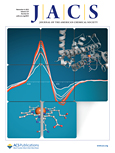 The authors of a paper on a mechanism for potential cancer therapies are retracting it after realizing they published some proprietary findings “without permission and agreement from St. Jude Children’s Research Hospital.”
The authors of a paper on a mechanism for potential cancer therapies are retracting it after realizing they published some proprietary findings “without permission and agreement from St. Jude Children’s Research Hospital.”
According to the retraction note in Journal of the American Chemical Society, the authors included an X-ray crystal structure and data that were gathered at St. Jude’s and considered the hospital’s intellectual property. On the paper, the last author, Zhengding Su, listed an affiliation at St. Jude and Hubei University of Technology in China, along with Amersino Biodevelop Inc., based in Waterloo, Canada.
Here’s the note for “Efficient Reactivation of p53 in Cancer Cells by a Dual MdmX/Mdm2 Inhibitor:”
The Xray crystal structure of the Mdm2/nutlin-3a complex and the NMR data of MdmX in complex with the nutlin-3a analog, SJ298, reported in this article were obtained at and are the intellectual property of St. Jude Children’s Research Hospital (Memphis, Tennessee, U.S.A.). The authors published these results without permission and agreement from St. Jude Children’s Research Hospital. Accordingly, the authors retract this article.
St. Jude spokesperson Frannie Marmorstein told us that the paper had no St. Jude authors:
Dr. Zhengding Su was not an employee at St. Jude Children’s Research Hospital when he submitted the paper that contained St. Jude data and was retracted, and there were no St. Jude authors on the paper.
We asked Marmorstein how intellectual property from St. Jude made its way into a 2014 article that didn’t include any authors affiliated with the hospital:
Dr. Su was a Research Lab Specialist at St. Jude from 10/17/2011 – 08/20/13. He had access to the data as a member of the research team.
We also asked her how the hospital found out about the paper:
We learned of the data in the article when we saw the published manuscript. St. Jude then contacted the Journal.
Not surprisingly, Su’s St. Jude email address listed on the paper came back as undeliverable. The paper also lists an email address associated with the University of Waterloo, which Su has listed as an affiliation in other publications. We contacted William Power, Chair for the Department of Chemistry at Waterloo, who told us that Su:
has had no formal or informal role at Waterloo since October 2011. His use of any contact details involving Waterloo or claims of affiliation to Waterloo after October 2011 is clearly inappropriate and done without our knowledge or consent.
The paper has been cited twice, according to Thomson Scientific’s Web of Knowledge.
We’ve also reached out to JACS, to see if they can provide any further information.
Yesterday, we reported on an investigation at St. Jude’s Children’s Hospital that found an image had been fabricated in a 2012 paper on a potential treatment for neuroblastoma.
Like Retraction Watch? Consider making a tax-deductible contribution to support our growth. You can also follow us on Twitter, like us on Facebook, add us to your RSS reader, and sign up on our homepage for an email every time there’s a new post. Click here to review our Comments Policy.
This retraction evokes my interest for how the scientists draw their affiliation when they publish their results which are accomplished in different institutes, in case they have moved from a institute to another one. Actually I think it is quite normal for the corresponding authors were always affiliated to their previous employer, regardless the intellectual property issue.